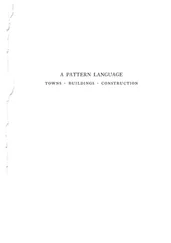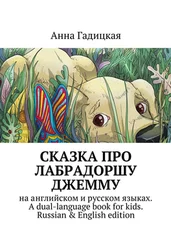Source : Kockelman (2007:377). Reproduced by permission of Paul Kockelman. Current Anthropology , a journal published by University of Chicago Press.
There are three ways in which a sign can be related to its object, according to Peirce, and it is the second of these ways that leads us to the important concept of indexicality. These three types of signs – icon, index, and symbol – are defined as follows (Peirce 1955:102–115):1955:102–115): 13
Icon . A sign that refers to its object by means of similarity. Examples include photographs, diagrams, or sketches. Onomatopoeic words (e.g., “choo choo train,” “meow”) have an iconic dimension because of the similarity in sound to that which they represent.
Index . A sign that refers to its object “because it is in dynamical (including spatial) connection both with the individual object, on the one hand, and with the senses or memory of the person for whom it serves as a sign, on the other hand” (Peirce 1955:107). In other words, just as an index finger points to an object, an indexical sign “points to” its object through some connection or contiguity, that is, a co-occurrence in the same context. Examples of indexical signs include the classic one of smoke, which indexes fire; a rolling gait, which indexes the profession of sailor; and a clock, which indexes the time of day. Other indexical signs include pronouns and words such as “here” or “now” because they are connected to (indeed, cannot be understood without knowledge of) particular elements of the context. More will be said about this property of indexicality below.
Symbol . A sign that refers to its object by virtue of convention or habit. Most words primarily fall into this category (though words can have iconic, indexical, and/or symbolic aspects simultaneously). The word “bird,” for example, does not represent its object by virtue of similarity or any sort of “dynamical connection”; it is simply conventional in English to call most flying animals with wings “birds.” Some signs combine iconic or indexical features with conventional ones. For example, it is conventional in English to use the word “chickadee” to label a small black, white, and grey bird – but this symbol also has an iconic aspect to it because the name of the bird resembles the bird’s call, which sounds like “chick-a-dee-dee-dee.”
While all three of these types of linguistic signs have been employed by linguistic anthropologists in their analyses, Peirce’s concept of the indexical sign has drawn a great deal of attention in recent decades because of its potential for showing how and where linguistic forms “point to” aspects of social or cultural contexts. Certain categories of words have been closely studied because they are completely context-dependent in that they inherently refer to particular moments in time or places in space (“here,” “then,” “now,” “there”) or social actors (“you,” “I,” “that person,” “such individuals”). In order to understand to whom “you” refers, for example, one must know the specific context of the conversation or text in question. And these sorts of references can shift; the person referred to as “you” can easily become “I” (or vice versa), and in reported speech a statement such as, “I’m already here,” can be reported using different words and verb tenses – for example, “You said that you were already there.” 14
In addition to indexicals that refer to specific times, places, individuals, objects, or concepts, there are also more general ways in which language can be indexical. In other words, as Jakobson has already informed us, language can “point to” something social or contextual without functioning in a referential way. Aspects of language use such as regional or ethnic “accents” or “dialects,” for instance, “point to” the speaker’s origins and are therefore examples of nonreferential or “pure” indexicality (Silverstein 1976:29). Ways of speaking that come to be associated over time with particular social groups can be called “registers” – examples include “motherese,” “geek talk,” and “teacher’s voice” – and therefore when a way of speaking becomes associated with a specific group, the process is known as enregisterment (Agha 2004, 2007). This process is constantly occurring, and we are all participating in it.
Some indexicals have both referential and nonreferential functions. The Nepali pronouns and verb forms used in the Pounded Rice Ritual described at the outset of this chapter, for example, index not just the particular addressee (the bride) but also her social position as it plummets from the relatively high status of daughter to the lowly status of daughter-in-law. Silverstein maintains that such indexes can call into being the very social relations that they are indexing (1976:34). In this sense, they are performative, as we shall discuss in greater depth in a later chapter. Similarly, the various words the San Francisco high school students used for “stoned” also index their youth status and most likely membership in various social groups. Indexicality is also an important concept for understanding the disappearance of the language of Taiap in Papua New Guinea, as it indexed certain social identities the villagers had come to devalue. Much more will be said about these sorts of situations, as well as many others, throughout the rest of the book. For our purposes here, it is important to realize the centrality of the concept of indexicality. Duranti writes,
To say that words are indexically related to some “object” or aspect of the world out there means to recognize that words carry with them a power that goes beyond the description and identification of people, objects, properties, and events. It means to work at identifying how language becomes a tool through which our social and cultural world is constantly described, evaluated, and reproduced.
(1997:19)
The concept of indexicality is powerful but also extremely nuanced and culturally and linguistically specific (Hanks 1999:125). Acknowledging the socioculturally embedded nature of language is therefore the first step toward being able to shed further light on how indexicality works. Here are just a few examples of the subtle ways in which language can index social relations, identities, or values, “pointing to” such important aspects of the sociocultural world and even creating, reinforcing, or challenging those very relations, identities, or values:
A college student mimics the voice of a character from a comedy show, thereby indirectly referencing not only that character and that show but also indicating that she is the sort of cool, hip, in-group sort of person who watches such a show.
Labeling someone as an “enemy combatant,” a “freedom fighter,” a “terrorist,” or an “insurgent” can index the speaker’s political views about the conflict in question and can also sometimes establish, strengthen, or transform legal, military, or political understandings, thereby having real effects in the social world.
Code-switching or translanguaging (Flores 2019) between two or more languages, dialects, or social registers can index different processes involved in a person’s ethnic, racial, gender, and/or socioeconomic identity formation and can have different social or even moral connotations, depending on the situation.
As Silverstein notes: “Some of us have long since concluded that such phenomena are indexical all the way down” (2006:276).
The Inseparability of Language, Culture, and Social Relations
The rest of this book will provide concrete examples of how these four concepts – multifunctionality, language ideologies, practice, and indexicality – are being applied in the field of linguistic anthropology. In the process, the following chapters will also attempt to reach two specific kinds of readers of this book: those who believe that language should be studied in a technical way, isolated from any actual instance of its use, and those who believe that social relations and cultural values should be studied without a close analysis of linguistic practices. To these readers, and indeed to all other readers as well, I hope to demonstrate in the following pages that language, culture, and social relations are so thoroughly intertwined that they must be studied in connection with one another. The field of linguistic anthropology provides some of the necessary tools for arriving at a deeper understanding of such linguistic, cultural, and social phenomena.
Читать дальше












